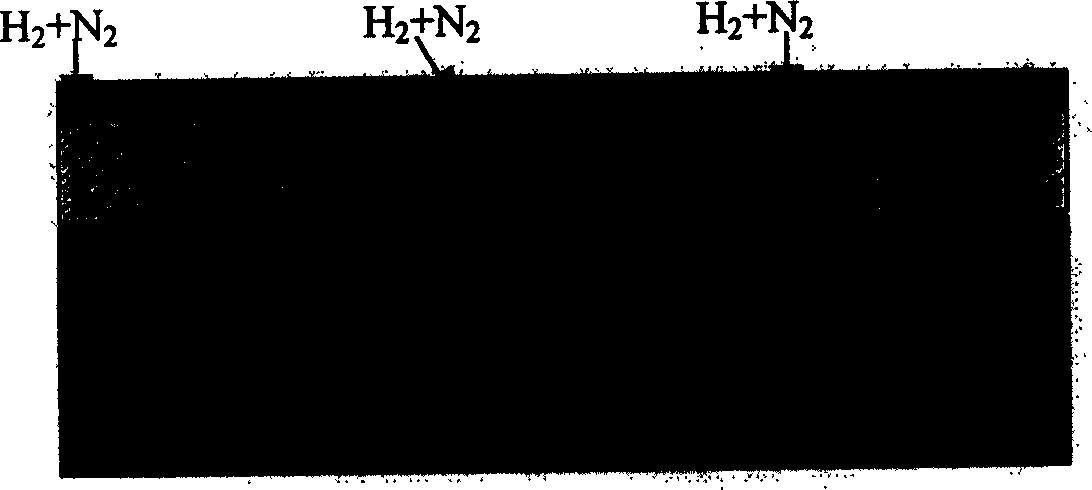Low temperature annealing process for relieving MOCVD TiN membrane stress and resistance
A process and annealing technology, applied in the field of post-annealing process of MOCVD TiN film, can solve the problems of increased sheet resistance, high through-hole resistance, and high thin film, and achieve the effect of reducing processing time, reducing device damage, and reducing damage.
- Summary
- Abstract
- Description
- Claims
- Application Information
AI Technical Summary
Problems solved by technology
Method used
Image
Examples
Embodiment Construction
[0029] The implementation steps of the present invention are as follows:
[0030] 1. After photolithography and etching process, the required metal interconnection vias are prepared; then MOCVD TiN film deposition is performed. At this time, the obtained film is relatively loose, and there are still a considerable amount of C and O impurities in the film, and its resistance Changes over time in air and requires post-processing.
[0031] 2. Anneal the TiN film. The specific process is: the annealing furnace adopts N 2 and H 2 Mixed gas, pressure control is 10Tor or 18Tor or 25Tor; N 2 and H 2 The volume ratio is controlled as: 1:0.5, or 1:2.5, or 1:5; the annealing time is 75S, or 60S, or 90S; the heating rate is: 50℃ / S, or 60℃ / S, or 70℃ / S; Annealing temperature: 430°C, or 400°C, or 450°C. After annealing treatment, the thickness of TiN film is reduced by about 10%, the resistance is reduced by about 20%, and the film quality is more dense and stable.
PUM
 Login to View More
Login to View More Abstract
Description
Claims
Application Information
 Login to View More
Login to View More - R&D
- Intellectual Property
- Life Sciences
- Materials
- Tech Scout
- Unparalleled Data Quality
- Higher Quality Content
- 60% Fewer Hallucinations
Browse by: Latest US Patents, China's latest patents, Technical Efficacy Thesaurus, Application Domain, Technology Topic, Popular Technical Reports.
© 2025 PatSnap. All rights reserved.Legal|Privacy policy|Modern Slavery Act Transparency Statement|Sitemap|About US| Contact US: help@patsnap.com



